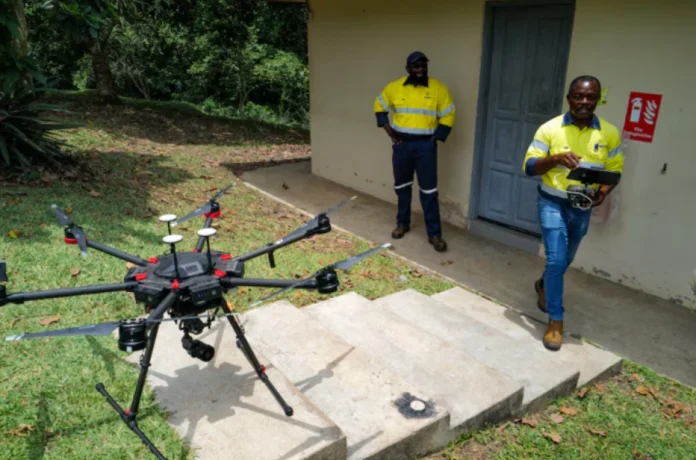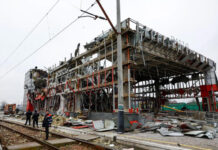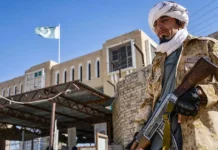
With gold prices hitting historic highs above $3,300 per ounce, mining companies across West Africa are ramping up surveillance and security to confront a rising tide of illegal mining, known locally as “wildcat mining”, that threatens their operations, the environment, and community safety.
At the vast Tarkwa gold mine in southwestern Ghana, owned by Gold Fields, drones now fly daily missions across the 210-square-kilometer site. Equipped with high-resolution cameras, the unmanned aircraft have become the first line of defense against encroaching illicit miners.
“Because of the vegetation cover, if you don’t have eyes in the air, you won’t know something destructive is happening,” said Edwin Asare, head of protection services at Gold Fields’ Tarkwa mine. “It’s like you first get eyes in the sky to help you put boots on the ground.”
On a recent patrol, a drone detected suspicious activity, prompting a rapid response from a 15-person security team. They discovered abandoned tools, freshly dug trenches, and toxic pools of mercury and cyanide—evidence of wildcat miners operating illegally within the concession. Seven diesel-powered water pumps and a “chanfan” processing unit were confiscated.
The surge in gold prices has intensified sometimes deadly confrontations between artisanal miners and industrial operators. Since late 2024, nearly 20 illegal miners have been killed in clashes at sites operated by Newmont, AngloGold Ashanti, and Nordgold in Ghana, Guinea, and Burkina Faso, according to multiple industry sources.
At AngloGold Ashanti’s Obuasi mine in January, nine wildcat miners were fatally shot after breaching the site’s perimeter. Other violent incidents have erupted in Mali and at Newmont’s Ahafo mine in northwestern Ghana, where three miners were shot by guards earlier this year.
Artisanal mining is not a fringe activity, it supports nearly 10 million people across sub-Saharan Africa, according to a May UN report. In West Africa alone, unregulated mining accounts for up to 30% of gold production and provides livelihoods for millions. But these operations, often backed by cartels and foreign investors, including Chinese nationals, have grown increasingly sophisticated and damaging.
“Artisanal miners are now reaching ore bodies hundreds of meters underground, impacting reserves and shortening the lifespan of industrial mines,” said Adama Soro, president of the West African Federation of Chambers of Mines.
The economic strain is palpable. One Ghanaian mining firm reports spending over $500,000 annually on security measures like drone surveillance, but still faces constant incursions.
In response, mining companies across Ghana, Burkina Faso, and Mali have lobbied for permanent military protection at mining sites. In Ghana, companies have agreed to shoulder the cost, estimated at 250,000 Ghana cedis ($18,116) per security contingent per day. The government has yet to formally respond.
Meanwhile, Ghana’s Minerals Commission is stepping up its technological arsenal. A new AI-powered control center is being set up to analyze data from 28 drones deployed across illegal mining hotspots. Excavators will be fitted with trackers and can be remotely disabled if they stray outside authorized zones.
“This is a fight we can win with technology, if we allow full deployment,” said Sylvester Akpah, a consultant on the initiative.
With predictions that gold could surge to $5,000 an ounce due to global instability and central bank demand, experts warn that illegal mining, and the conflicts it sparks, may only worsen unless decisive, tech-driven, and community-conscious interventions are scaled up across the region.
Written By Rodney Mbua


















